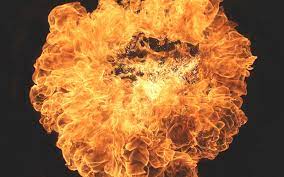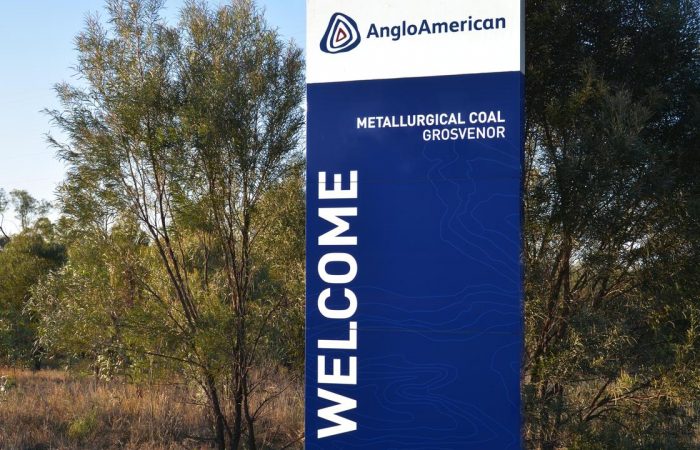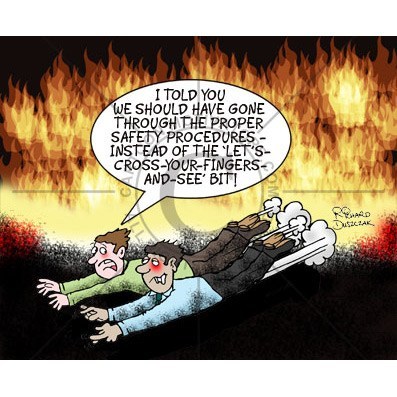
Grosvenor Mine Inquiry Key Issue 4 Submission number 2. “Neither a strata collapse or a methane explosion in the goaf was “the mechanism by which an explosive concentration of methane was expelled on to the longwall face.” The major source of the explosive concentration of methane on the Longwall face was methane gas “bubbling out the floor”.
Please find attached my submission for Key Issue 4 Number 1)
What the evidence establishes about the nature and cause of the serious accident at Grosvenor mine on 6 May 2020, including:
The relative likelihood of a strata collapse or a methane explosion in the goaf being the mechanism by which an explosive concentration of methane was expelled on to the longwall face.
The Submission is 10 pages in length all up and does not have any attachments.
The first 2 pages reads
Neither a strata collapse or a methane explosion in the goaf was “the likely mechanism by which an explosive concentration of methane was expelled on to the longwall face.”
The major source of the explosive concentration of methane on the Longwall face was in high probability the methane gas “bubbling out the floor”.
Depending on the location of the overpressure event and the way the pressure wave and “wind blast” travelled, will determine if it was possible for additional methane came out of the goaf onto the face or not.
We know from the evidence from the witnesses that the effects were much greater on the face near the tailgate than it was on the maingate.
I believe as I have posted previously that there are signs of an advanced spontaneous heating back as far as the 19th of March, when ethylene was detected by the Gas Monitoring System.
That being right at the back of the tailgate in the region of TG 104 C hdg 39 to 41 cut through.
https://www.qldminingcrisis.com.au/2021/03/18/britton-ventilation-arrangement-in-grosvenor-mine-designed-to-maximize-potential-losing-control-of-goaf-and-initiating-spontaneous-combustion/
https://www.qldminingcrisis.com.au/2021/04/05/the-theories-advanced-by-various-expert-witnesses-over-the-last-3-weeks-to-justify-their-theory-do-not-account-for-known-facts-at-grosvenor-ethylene-was-first-detected-39-to-41-c-t-c-heading-this-ar/
It was the methane gas bubbling out of the floor that created an explosive mixture within 13 seconds from the first “Overpressure Event”.
Due to the description of the effects of the explosion, it appears the Methane Ignition resulted in a Low Velocity Methane Deflagration/Explosion
As those on the face at the time of the face of LW 104 when the methane stated and testified; the ventilation on the face ceased altogether in the 13 second interval.
This has allowed the methane General Body level in the tailgate end of the face to increase from its roughly 1% normal concentration, up to (and likely in excess of), the lower explosive limit.
Because of the delay time in gas detectors, the rise to the lower explosive limit occurred faster than the methane detectors could detect and drop power off the face.
All the electrically powered equipment on the LW 104 face retained power and the recently repaired AFC continued to run up until power dropped off the face.
The exact time power would have dropped would be when the Bretby and Maingate Cameras ceases recording as it is on the same power feed, and should have stopped recording and transmitting when power dropped from the Face.
The actual ignition source appears to be located in the tailgate of the Longwall Face
The Grosvenor LFI Investigation Report or Serious Accident 06052020 identifies these as potential ignition sources in Section 6.6 on page 44
6.6 Ignition Sources
The following potential ignition sources were identified as part of the re-entry risk assessment completed following the event. Currently, the ignition source remains unknown and is part of the ongoing investigation into the cause of the event on 6th May 2020.
- Rock on rock frictional ignition
- Spontaneous combustion
- Air moving slowly over or through broken/uncompacted coal
- Propensity of coal to spontaneously combust
- Electrical sources
- Batteries – Ignition Of methane or hydrogen
- Cable damage/component failure/short circuit causing extemal electrical arcing (to apparatus)
- Damaged cap lamp exposing hot filament as an ignition source
- Diesel equipment unsuitable as installed/ faulty/ damaged/ modified
- Frictional static discharge caused by compressed air or air movement e.g. Venturi
- Lightning strike surface resulting in conduct to underground
- Voltage surges
- Contraband
- Frictional heat contact of steel with rock Impact/Sparking – steel on steel.
- Transport collision with steel structure
- Embers or flames from surface fires
- Hot particles from welding cutting around top of borehole
- Sparking from fill material dropped down boreholes
- Exothermic chemical reactions
- Explosives
- External surfaces internal combustion engines
- Mechanical
It is recommended that each of the above potential ignition sources, and any subsequent identified potential ignition sources, continue to be reviewed.
REFERENCES USED
1) GROSVENOR LFI INVESTIGATION REPORT for SERIOUS ACCIDENT -06052020 (page 3 of 8)
2) MINEWORKERS STATEMENTS, RECORD of INTERVIEW and TRANSCRIPT (page 4 of 8)
3) 19.-LW104-GOAF-DRAINAGE-RISK -ASSESSMENT (page 5 of 8)



Good article Stuart,
The scenario you have proposed is quite possible, however not necessarily the only possibility.
If access onto the longwall face is ever gained then the evidence will be quite visible.
It is going to be hard for the inquiry to determine the cause based on the data that is publicly available to date, and therefore put meaningful recommendations in place.
What happens if your scenario is what the board sees and makes the recommendations accordingly, and in the next 12 months that longwall face is reopened and find evidence contrary to the recommendation?.
Coal Hog;
Many of your points are valid.
As I have said previously I do not pretend to understand everything, have it 100% correct, or even worded properly.
That is one of the reasons I look forward to considered replies, questions, contrary views.
I can easily fix a few things in a few sentences and make it a updated final version.
When I finish the rest of key Point 4 it should cover a number of other related issues.
I am about half way through the one Submission for key point 5 numbers 2, 3 and 4.
I think it was logical to do this submission before I return to Key Point 4.
Thanks again
Coal Hog.
I have added a few words in existing statements and a few new sentences on the front page
Understand Stuart,
I have not followed the inquiry no where as well as you.
So your article is quite possible, my gut feel it is more goaf related, however if it was goaf related why hasn’t there been more events after the withdrawal.
Look at the result of the last Explosion inquiry, removed the flame safety lamp from our industry, changed legislation from prescriptive to risk based. To what outcome?, in the last 5 years two mines have blown up, injuring people, writing off $1B in assets, destroyed maybe 700 jobs and indirectly that many more.
The last thing our industry needs is another inquiry that does not come up with the actual cause because of time or $’s, and puts recommendations out that change the industry again and the overall result is that it could happen again.
Change is not always a good thing.
As always your articles are well structured and thought out with your knowledge and experience.